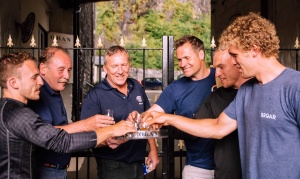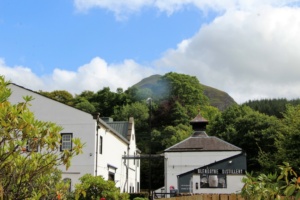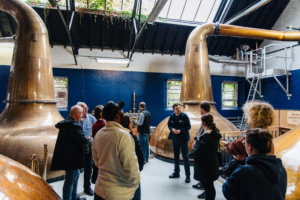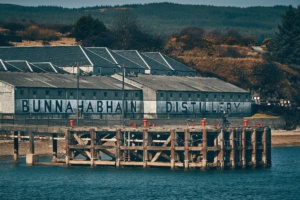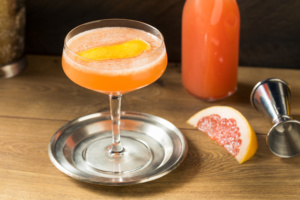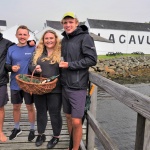Knockdhu Distillery: The Highlands Hidden Treasure
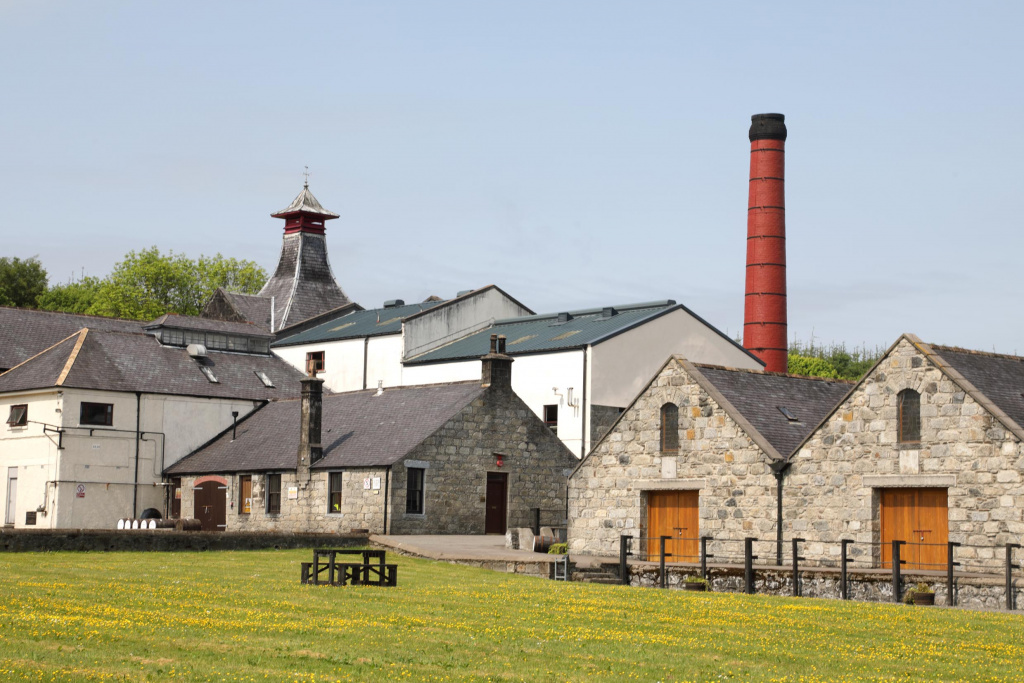
A tour of Knockdhu distillery involves three members of staff, though only one is on the payroll. He is manager Gordon Bruce, while his companions are Labradoodle Archie and Bichon Maisie, both of which help to make the friendly welcome even warmer.
The pair accompany Gordon around the site, reinforcing the impression that ‘The Knock’ – as it is known by locals – is just that bit different to most distilleries, with an old-school family firm feel to it, although it is owned by Inver House Distillers, itself now a subsidiary of the vast Thailand-based International Beverage Holdings.
The distillery is officially in the Highland region of production, though sometimes mistakenly labelled as a Speyside. It is located just off the Huntly to Portsoy road in rural Aberdeenshire, and externally it is compact, with an obvious Victorian granite-built ‘heart’ and classic pagoda-capped kiln.
The distillery is officially in the Highland region of production, though sometimes mistakenly labelled as a Speyside. It is located just off the Huntly to Portsoy road in rural Aberdeenshire, and externally it is compact, with an obvious Victorian granite-built ‘heart’ and classic pagoda-capped kiln.
The distillery is officially in the Highland region of production, though sometimes mistakenly labelled as a Speyside. It is located just off the Huntly to Portsoy road in rural Aberdeenshire, and externally it is compact, with an obvious Victorian granite-built ‘heart’ and classic pagoda-capped kiln.
This year Knockdhu celebrates its 125th anniversary, with two new expressions of whisky to toast the occasion. Since 1993 its whiskies have appeared under the anCnoc banner, as Inver House Distillers decided there was likely to be consumer confusion between Knockdhu and Diageo’s long-established Knockando single malt brand.
Since 1993 its whiskies have appeared under the anCnoc banner, as Inver House Distillers decided there was likely to be consumer confusion between Knockdhu and Diageo’s long-established Knockando single malt brand.

Knockdhu History
The history of Knockdhu distillery begins with the purchase of Knock Estate in 1892 by John Morrison, who discovered that there were a number of springs on the estate, capable of providing a steady supply of pure water.
The countryside around Knock was prime barley growing land, and peat was also readily available nearby. Add to those attractions the close proximity of the Great North of Scotland Railway line for transportation, and everything added up to the perfect place to construct a distillery.
The 1890s were a decade of dramatic expansion of distilling capacity in Scotland, as the global boom in popularity of blended whisky reached its peak, and one blend that was performing particularly well was that of John Haig & Sons.
Haig had been one of the founding members of the Distillers Company Limited (DCL), an amalgamation of Scotland’s largest grain distillers, established in 1877 to safeguard supplies of grain whisky for blending by its members.
By the early 1890s, however, DCL required additional malt distilling capacity to satisfy demand for the Haig blend, and it ventured north of its Lowland power base, after hearing about the promising site at Knock in Aberdeenshire. A deal was done with John Morrison, and construction of the distillery began in 1893. Production commenced in October 1894, and the site remained in continuous operation until 1931.
Surprisingly, Knockdhu, as it was christened – from the Gaelic for ‘black hill’ – has the distinction of being the only distillery built by the DCL, rather than acquired from existing operators.
Knockdhu remained a low-key player in the DCL stable until the early 1980s, serving as a Royal Indian Army Service Corps base during the Second World War, when it became the only Scottish distillery to boast a Halal slaughterhouse!
Overproduction in the Scotch whisky industry led to a dramatic programme of closures during the 1980s by DCL, which had grown to become the dominant force in Scotch whisky distilling. On 31st May 1983, DCL closed 11 malt distilleries, including Knockdhu. Two years later, another 10 followed.
In common with most of the distilleries that fell under the DCL axe, Knockdhu was selected as it was only equipped with a single pair of stills, limiting potential output when the industry subsequently recovered.
Many of the distilleries closed in 1983 and 1985 were never to reopen, but Knockdhu was fortunate enough to attract the attention of Inver House Distillers, which acquired the mothballed site in 1988 from DCL’s successor company United Distillers.
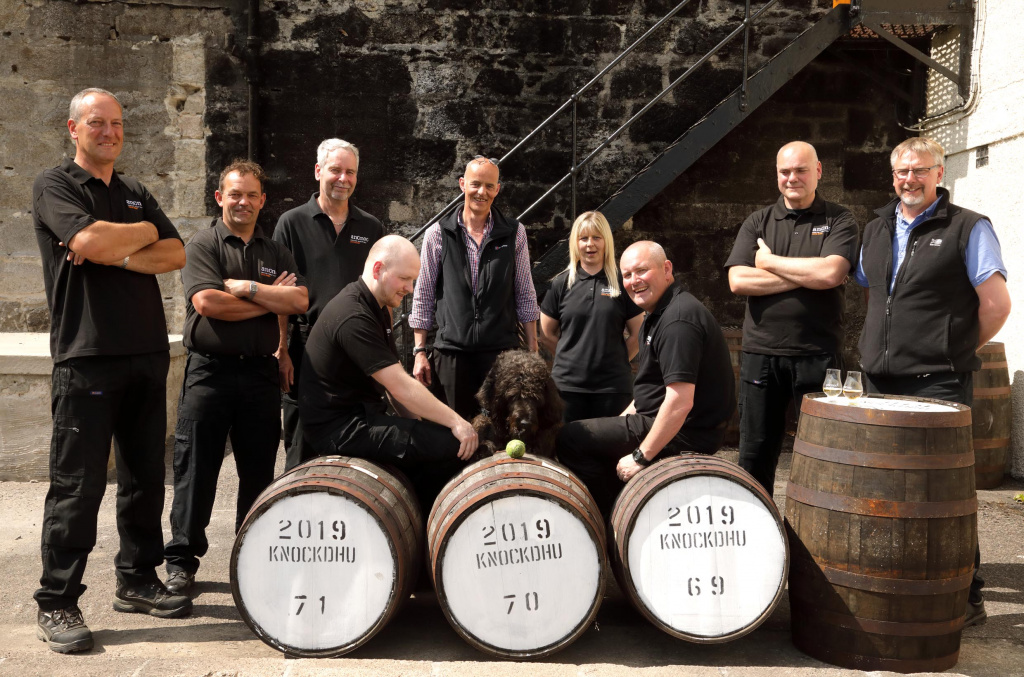
Inver House
Inver House Distillers had been established in 1964 as a subsidiary of Publicker Industries, based in Philadelphia, and Knockdhu was the first of five distilleries purchased by the company. Speyburn, Pulteney, Balmenach and Balblair followed during the next decade, as the company built a portfolio of single malt brands and malt whisky capacity for use in its Pinwhinnie, Catto’s, Hankey Bannister and MacArthur’s blended Scotches.
In the hands of Inver House Distillers, production at Knockdhu recommenced on 6th February 1989, with the first official bottling of Knockdhu single malt hitting the shelves the following year. The anCnoc name was adopted three years later, as Inver House Distillers prepared to make serious efforts to promote it as a single malt.
A range of expressions aged, from 12 to 35 years, appeared over the next few years, along with several limited edition peated variants. Today the core bottlings are 12, 18 and 24 years old and the peated whisky ‘Peatheart’. There is a vintage 2002 expression, plus Rudhan, Barrow and Black Hill Reserve – all travel retail exclusives.
According to International Beverage Marketing Director Cara Chambers, this is a milestone year for the whisky.
“anCnoc is a premium malt whisky that everyone can enjoy, in particular those looking to discover Scotch whisky and a high-quality Highland single malt for the first time. We wanted to do something really special to celebrate our 125th anniversary, so we have delved into our past and taken time to reflect on the things that give anCnoc its distinctive character. As a result, we’re looking forward to sharing some wonderful new expressions and experiences with our drinkers in the year ahead.’
Distillery Manager
The aforementioned Gordon Bruce has been the man in charge at Knockdhu for the past three years, and has spent a total of 31 years in the employ of Inver House Distillers. He was born in the historic Pulteneytown area of Wick, Caithness, and recalls that “I left school to do an HND in computer studies, but I thought computers would never catch on! I went to work as a heating engineer, then joined the local Pulteney distillery in 1988, staying there till 1994. I trained as mashman, stillman, and rose to be brewer there. I then went to Bablair as brewer, and in 2016, I came to Knockdhu as manager.”
He notes that much of the present production set-up dates from an extensive DCL refit during 1964, when a new mashtun – which retains its traditional copper dome – and washtuns were installed. Gordon explains that “The distillery is totally manual.” He points to a calculator by the mashtun, declaring “That’s our computer system!”.
Knockdhu has worked 24/7 with one operator per shift since 2006, and Gordon notes that “The guys can react very quickly – they never stop working on a shift. In terms of overall production, we did 1.9mla in 2016, and two million would be our absolute maximum. We are almost paranoid about wort clarity, so we don’t stir it up too much in the mashtun. We want clear wort to generate esters, which are crucial to the character of the spirit.”
Fermentation takes place in eight Oregon pine washbacks, and Gordon declares that “Modern yeast strains have been one of the biggest changes in the industry during the past ten years or so. They can tolerate higher temperatures, which means we use less cooling water, and as a distillery we can struggle for water at times, especially in summer, as we are relying on local springs. Every drop of water is used five times during production. You also get a higher alcohol yield from modern yeasts.”
When it comes to distillation, he explains, “The pair of stills have tall necks, so you’d expect nice, light spirit, but we use worm tubs to condense the spirit, which tends to make it heavier. When we first switched from five to seven-day working the spirit style changed, because we were doing everything faster.”
Gordon’s personal ingenuity created a regime unique in Scotch whisky distilling to resolve the issue. He recalls that “I came up with the idea of putting a modern shell-and-tube condenser on the wash still before the worm tub, to give lots more copper contact. That took us back to the five-day week style of spirit we had been making.”
Casks and Peating
Some of the spirit produced at Knockdhu is taken away by road tanker to Inver House Distillers’ warehousing complex at Airdrie, while a significant amount of that destined for single cask bottling is filled at the distillery and matured in the on-site three dunnage warehouses and one racked warehouse, which between them can accommodate some 6,500 casks. According to Gordon Bruce,
“Seventeen or eighteen per cent of what we make goes for single malt, but that amount is growing.
“In terms of the wood mix in each expression, the 12-year-old and current 2002 annual vintage bottling are mainly ex-Bourbon, while the 18-year-old spends 15/16 years in Bourbon and then a final maturation period in Oloroso sherry casks. The 24-year-old is in Bourbon casks for 21 years, and then has three years in sherry wood. All peated spirit is aged only in ex-Bourbon casks.”
On the subject of that peated spirit, which was first launched in 2014, he notes that “We make peated spirit for three months of the year, so it’s quite a big chunk of production. It’s Aberdeenshire peat, malted by Crisp at Portgordon on the Moray Firth coast, and it’s got a sweet, woody smoke, quite different to the maritime character of Islay peat, for example. It’s peated to 45-48ppm.
“We produce peated malt for the last six weeks of the year and then the first six weeks of the new one. That gives us spirit from two calendar years in one tranche. The peated variant is nicely balanced. It’s easy to make a heavily-peated whisky with nothing but smoke, but with ours, you still get the character of the whisky coming through.”
Visiting Knockdhu
Knockdhu is off the obvious tourist trails of the north-east of Scotland and the public tend not to realise that the distillery welcomes visitors. However, Gordon notes that “We run tours Monday to Friday, 10am and 2pm, ideally pre-booked. Sixty to 70 per cent of our visitors are German, and Germany is a very knowledgeable whisky market. We tailor tours to what people want, and ask them to make a donation to one of the charities we support instead of charging a set fee.”
If you get the chance to visit Knockdhu, then grasp it with both hands. As you’ve probably gathered by now, it is a welcoming and individualistic distillery. Just remember to take some dog treats with you.
 4.7/5 with 10,000+ reviews
4.7/5 with 10,000+ reviews
